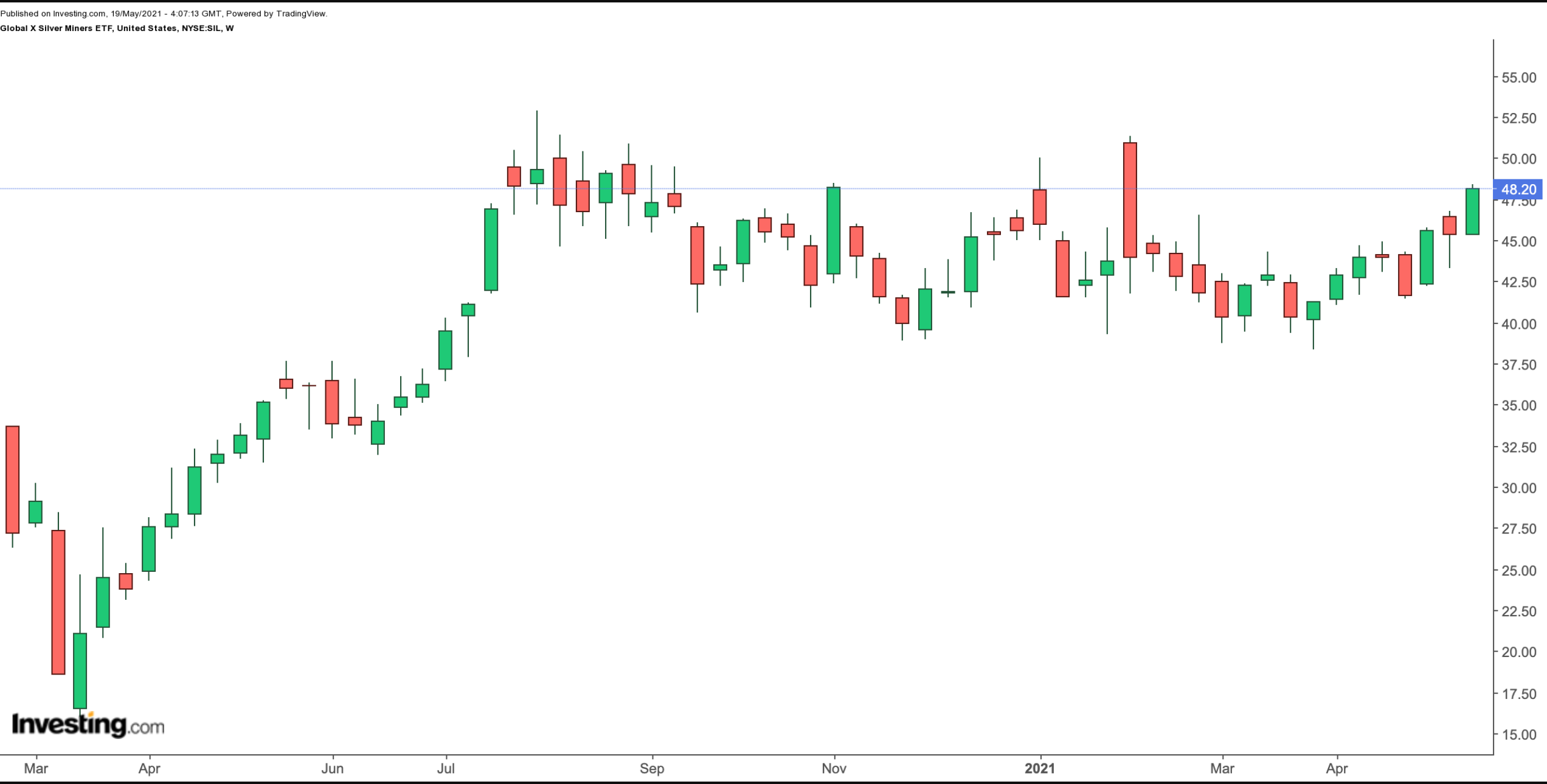Inflation worries have been mounting on Wall Street. The US 10-year Treasury yield stands at 1.64%, and bond yields are rising. A year ago, the yield on the benchmark note was around 0.7%.

US investors have been paying increased attention to the Consumer Price Index, which measures the official inflation level. In April, prices leaped 4.2% year-over-year, making it "the largest 12-month increase since a 4.9% increase for the period ending September 2008.”
Commodity prices have also been rising. In recent weeks, many commodities, such as Brent crude, corn, copper, soybeans and uranium, have seen either record or multi-year highs.
These powerful moves in commodity prices tell us that global demand is strong relative to global supply. Meanwhile, after months of lackluster returns, gold and silver have been moving up, too. The overall picture painted by commodities in general means higher inflation might be on the horizon.
Given that scenario, equity markets typically get jittery as analysts debate whether the Fed could start raising interest rates sooner than anticipated. At present, the Fed is still maintaining its dovish stance, with an average annual 2% inflation growth target. But investors worry how much longer that will last.
We recently covered several asset classes and exchange-traded funds (ETFs) that could be appropriate for portfolios in an inflationary world (here, here and here). Today, we introduce two more that could be appealing to a range of readers.
1. Global X Silver Miners ETF
Current Price: $48.20
52-Week Range: $31.94 - $52.87
Dividend Yield: 1.82%
Expense Ratio: 0.65% per year
The Global X Silver Miners ETF (NYSE:SIL) invests in silver mining companies. The fund started trading in April 2010, and net assets stand at $1.37 billion.

SIL, which follows the Solactive Global Silver Miners Total Return index, has 41 holdings. Close to 58% of the miners are based in Canada, followed by Russia (12.1%), the US (10.5%) and South Korea (6.4%).
The top three companies in the ETF are Wheaton Precious Metals (NYSE:WPM), Polymetal International (OTC:POYYF) and Pan American Silver (NASDAQ:PAAS), accounting for about 45% of the fund. We recently covered Polymetal International in detail.
Markets typically treat precious metals like gold and silver as inflation hedges. SIL can be regarded as a leveraged play on the price of silver. As the price of the metal rises, miners' margins generally improve and profits increase.
Thus, mining stocks tend to overshoot price action in the metal, both to the upside and the downside. The same typically holds true for gold miners. Put another way, prices of mining shares can turn around in a hurry.
So far this year, SIL is up around 4%. However, we should note that since late March the fund has returned more than 25%. We’d look to buy the dips in the fund.
2. IQ Real Return ETF
Current Price: $27.31
52-Week Range: $26.78 - $27.85
Dividend Yield: 0.98%
Expense Ratio: 0.42% per year
The IQ Real Return ETF (NYSE:CPI) aims to provide investors with a real return, or a return above the rate of inflation, as represented by the Consumer Price Index. The fund started trading in October 2009 and has $53.2 million net assets.

CPI, which tracks the IQ Real Return Index, has 15 holdings, all of which are other funds. Top 10 holdings comprise 95.5% of the total ETF.
The highest share (24.9%) belongs to the IQ Ultra Short Duration ETF (NYSE:ULTR), which invests in corporate bonds, asset- and mortgage-backed securities, and commercial paper. Year-to-date, ULTR is up about 0.11%.
Next in line are:
- iShares Short Treasury Bond ETF (NASDAQ:SHV): down 0.01% YTD; it has a weighting of 23.2%;
- SPDR® Bloomberg Barclays 1-3 Month T-Bill ETF (NYSE:BIL): down 0.04% YTD and has a weighting of 18.9% share;
- Invesco CurrencyShares® Japanese Yen Trust (NYSE:FXY): down 5.4% YTD and has a weighting of 18.9% share, recently covered here.
So far in 2021, the IQ Real Return ETF is up 0.03% (i.e., flat). At this point, as an inflationary hedge, we prefer SIL to CPI, which could still be potentially appropriate for parking capital temporarily.
